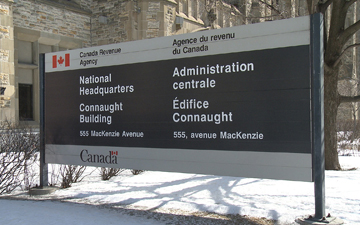CRA operational update - Ten things you need to know (Fall 2020)

Stevan Novoselac of Gowling WLG on the October update from the CRA
TORONTO – On October 21, three senior Canada Revenue Agency ('CRA') officials outlined a status update on tax controversy and dispute resolution at this stage of the COVID-19 pandemic. As the presentation was not recorded, we summarized the top ten topics covered.1
1. The Time Limits and Other Periods Act (COVID-19) ('TLOPA')
- The TLOPA applies to allow the suspension or extension of time limits for taking certain steps under numerous statutes,2 including the Income Tax Act and the Excise Tax Act. However, the TLOPA does not affect treaty-based statute-barred dates. Further, the TLOPA suspensions/extensions expire after December 31, 2020.
- In the small and medium-sized enterprise space, the decision whether to rely on the TLOPA to reassess a year that would otherwise have become statute-barred will be made on a case-by-case basis, taking into account the taxpayer's particular circumstances, including collectability issues.
- For large business audits, although the TLOPA speaks to March 13, an announcement date of May 19 is being relied upon, so taxation years that may have otherwise become statute-barred after May 19 will remain at risk of being reassessed until December 31.
- For notices of objection, the CRA had put in place an administrative exemption that would allow taxpayers with filing deadlines between March 18 and June 30 to file by June 30, without having to provide reasons for any extension that may have been required. Under the TLOPA, taxpayers whose objection deadline expired between March 13 and December 30 have six extra months to file, but December 31 remains a hard deadline.
- If an application seeking an extension of time to object was refused by the CRA (presumably outside the expanded filing window described above), the TLOPA extends the usual 90 day period for bringing the matter to the Tax Court of Canada by six months, with similar rules, meaning that if the deadline expired between March 13 and December 30 it gets extended by six months, but not past December 31.
2. Interest Relief
- Proactive interest relief is being granted systematically on income tax debts from April 1 to September 30 and for GST/HST debts from April 1 to June 30. Of course, this across-the-board policy does not relieve penalties or interest that were previously assessed and merely prevents further accrual.
- While this is the only general policy, additional relief can be considered on a case-by-case basis. The CRA is considering COVID requests on a priority basis and so if there is an urgent situation taxpayers should contact the taxpayer relief program.
3. CRA Business Resumption Logistics
- For small and medium sized audits, a few hundred auditors, out of thousands, were assigned to the Canada Emergency Response Benefit ('CERB') and Canada Emergency Wage Subsidy ('CEWS') programs.
- For large business audits, the CRA has been functioning at full capacity since at least as early as June, although a substantial backlog remains. In general, it is acknowledged that, irrespective of COVID, large business audits take significant time to complete and this is an identified area for CRA improvement.
- Similarly, for appeals officers, they have been returning to their regular workloads.
4. Notices of Objection
- CRA intake centres are back up and running and, once a notice of objection is filed with the CRA, if an appeals officer is not assigned within one month, taxpayers should consider contacting the CRA intake centre or CRA headquarters to follow up.
- Every month the CRA updates how long it takes for objections to be resolved: for low complexity objections, it is 100 days; for medium complexity objections, it is 295 days; and for those 2 or 3% of objections that are 'complex', the resolution can take one or two years.
- Selected objections, including those involving the general anti-avoidance rule, tax avoidance and transfer pricing and/or are over a certain monetary threshold, are mandatory referrals to CRA headquarters and tend to take longer to resolve.
- If there is urgency and good supporting reasons to expedite, the CRA is responsive to requests to prioritize.
5. Taxpayer Relief
- While the CRA generally targets 180 days for determining taxpayer relief applications, there is a backlog, exacerbated by COVID, so taxpayers should anticipate delays.
- It takes less time for the Tax & Charities Appeals Directorate to decide whether to grant relief and it may provide initial indications of how much relief may be available for pending assessment disputes. Of course, final relief amounts may not be confirmed until an assessment dispute is completed.
6. Voluntary Disclosures Program ('VDP')
- COVID has delayed the VDP by about four months, although throughout this time the VDP has prioritized matters affecting access to benefits and more recently managing the workload has been improved, as the CRA has assigned other employees to help reduce the backlog.
7. Audit Priorities
- In the small and medium-sized business space, it is understood that some industries have been hard hit by COVID and the CRA is seeking to strike a balance with auditing: on one hand, there are compliance issues that need to be managed and, on the other hand, there is an understanding that businesses may face solvency and collection issues. As a result, the CRA has adopted a case-by-case approach, as opposed to closing out audits across the board in particular industry areas.
- For large business audits, the CRA was first focussing on exceptional cases, then auditors were asked to clean up their dormant and low change audits, to focus on higher risk situations.
8. Patience
- For small and medium sized audits, even prior to COVID, auditors were supposed to work with taxpayers, grant reasonable requests for extensions and apply standard guidance for time frames for issuing request letters.
- For large business audits, auditors have more latitude and decisions on extension requests are made on a case-by-case basis.
- When there is a need to escalate an extension request, the protocol is to go first to the case manager's direct manager, then to the assistant director of audit in the Tax Services Office, then to the Tax Services Office director and finally to CRA headquarters, who will consider the perspectives of both the auditor and the taxpayer.
- Timeliness is important and the CRA does not like to see taxpayers trying to delay matters to reach a statute-barred date.
- For CEWS audits, the CRA assumes the documents are readily available, since the analysis supporting CEWS claims would be current, thus the CRA is not expecting taxpayers to delay in responding to requests for information and documents.
9. Communicating with Taxpayers
- Both CRA auditors and appeals officers have now been issued cell phones and taxpayers can provide the CRA with a waiver allowing their use, although appeals officers have not yet been mandated to provide taxpayers with their cell phone numbers.
- Similarly, email communications are permissible, with taxpayer agreement, although the CRA prefers documents to be uploaded to the CRA My Account portal.
- Videoconferences are possible, using Microsoft Teams and Webex, but not Zoom.
- Regular mail also remains an option, although perhaps a less timely one, as mailrooms become increasingly operational.
10. The Way Forward
- For small and medium sized audits, the CRA is focussing on education and is carefully identifying suitable taxpayers for education and others for full audits, although more restricted audits are generally expected going forward.
- The CERB and CEWS programs showcased how the CRA could quickly develop and adopt a digital and modern approach, which is a model now being sought to be applied to other areas.
- The CRA will continue to work to become more current, with interest accrual thereby becoming less of an issue, as the CRA raises more timely assessments.
- As it remains difficult to predict when CRA officers will be able to return to the office, remote working will continue and there may never be a 100% return.
Stevan Novoselac is the Canadian leader of Gowling WLG's Tax Dispute Resolution team. Read the original article on GowlingWLG.com.
Footnotes
1 This summary is based on our notes from the Advocates'; Society event, provided as a service for the information and benefit of interested parties unable to attend. Accordingly, while this reflects our best efforts to accurately transmit helpful information to our readers, it should not be taken as setting out official CRA positions.
2 The TLOPA suspensions/extensions are intended to benefit both the CRA and taxpayers, as the case may be.










(0) Comments